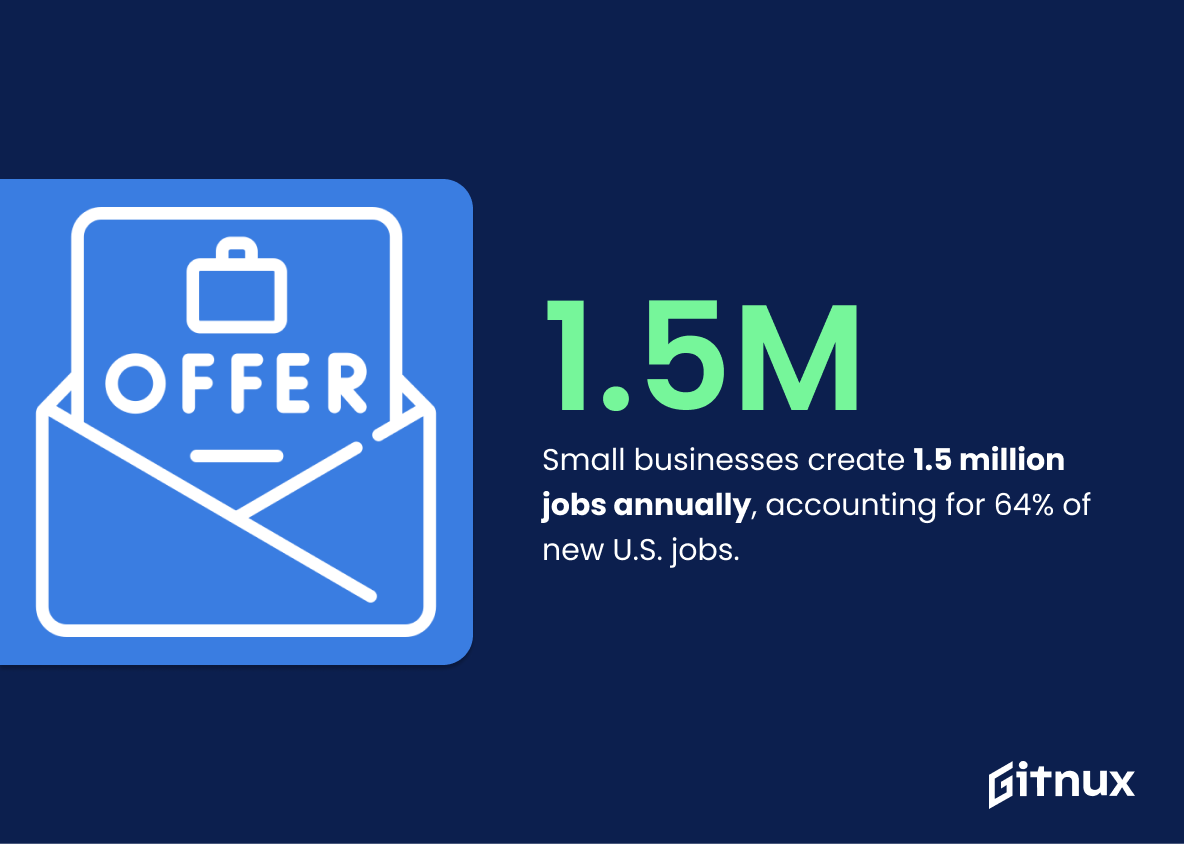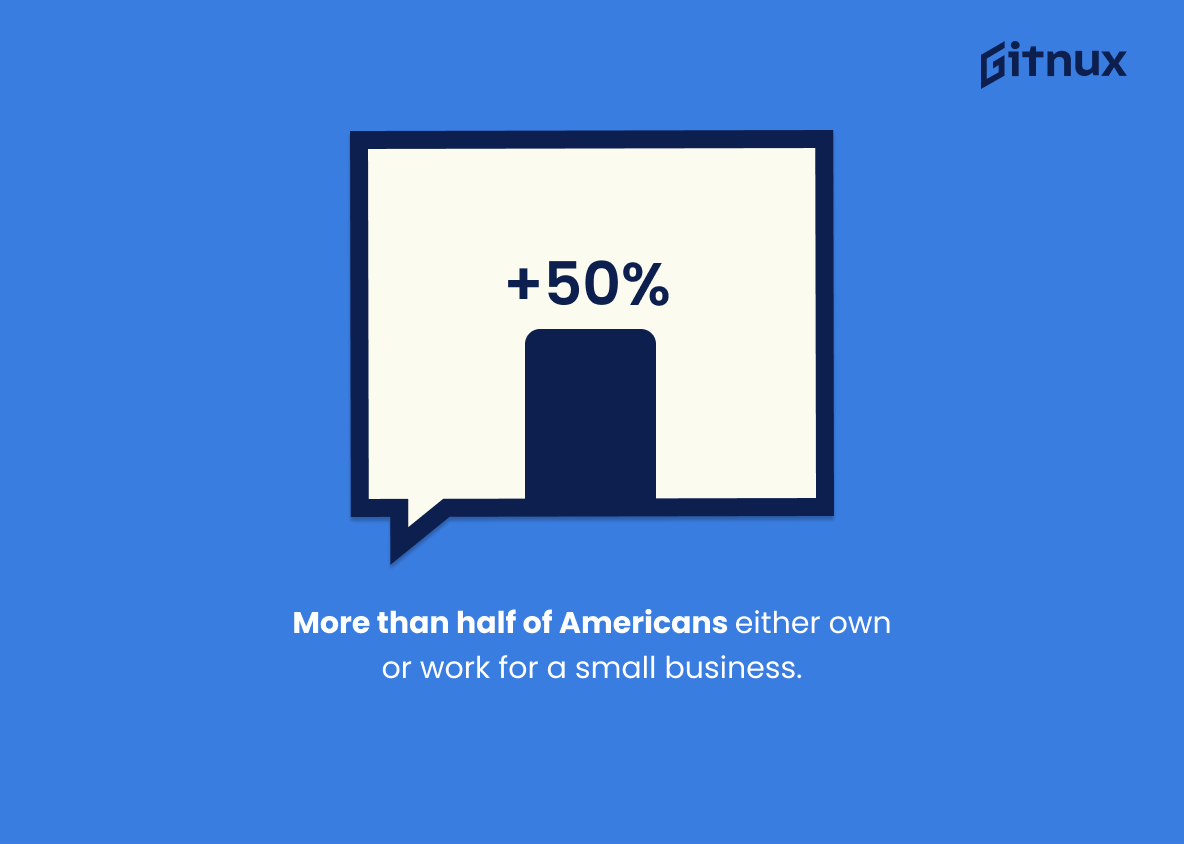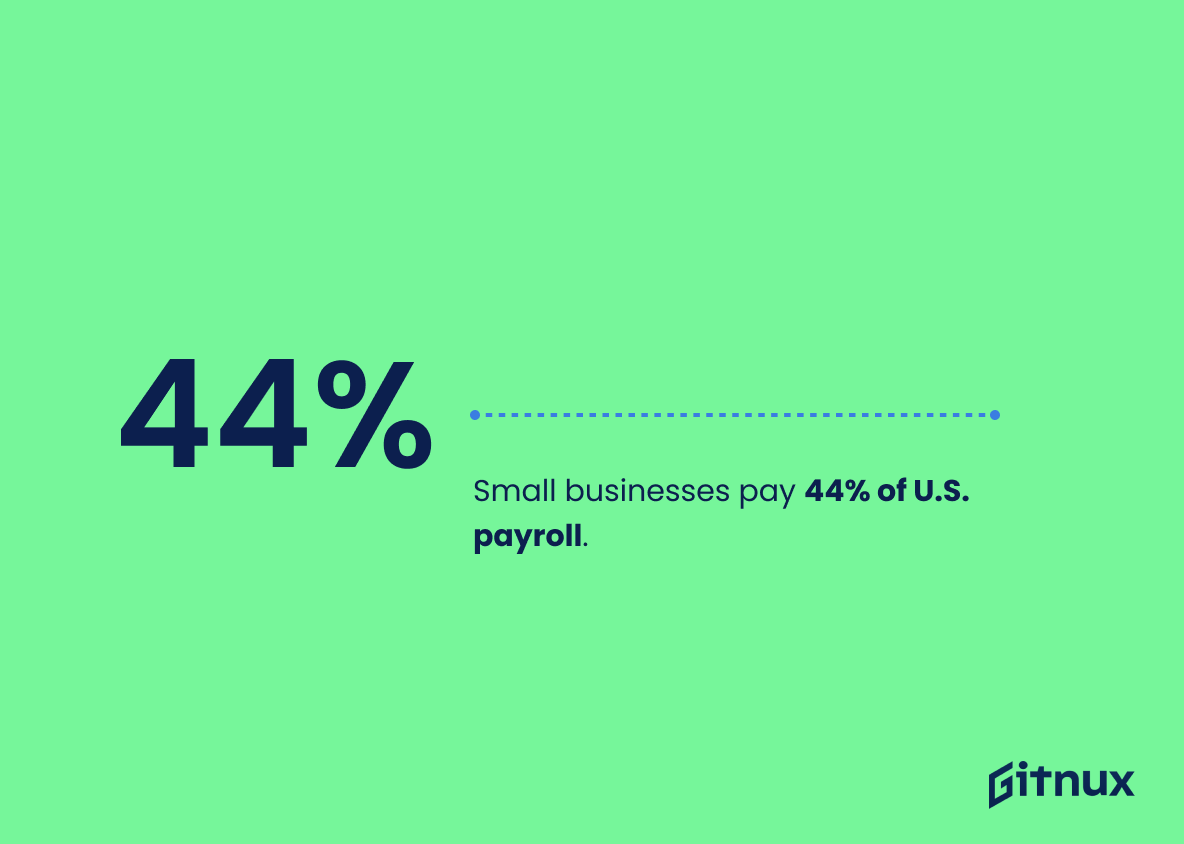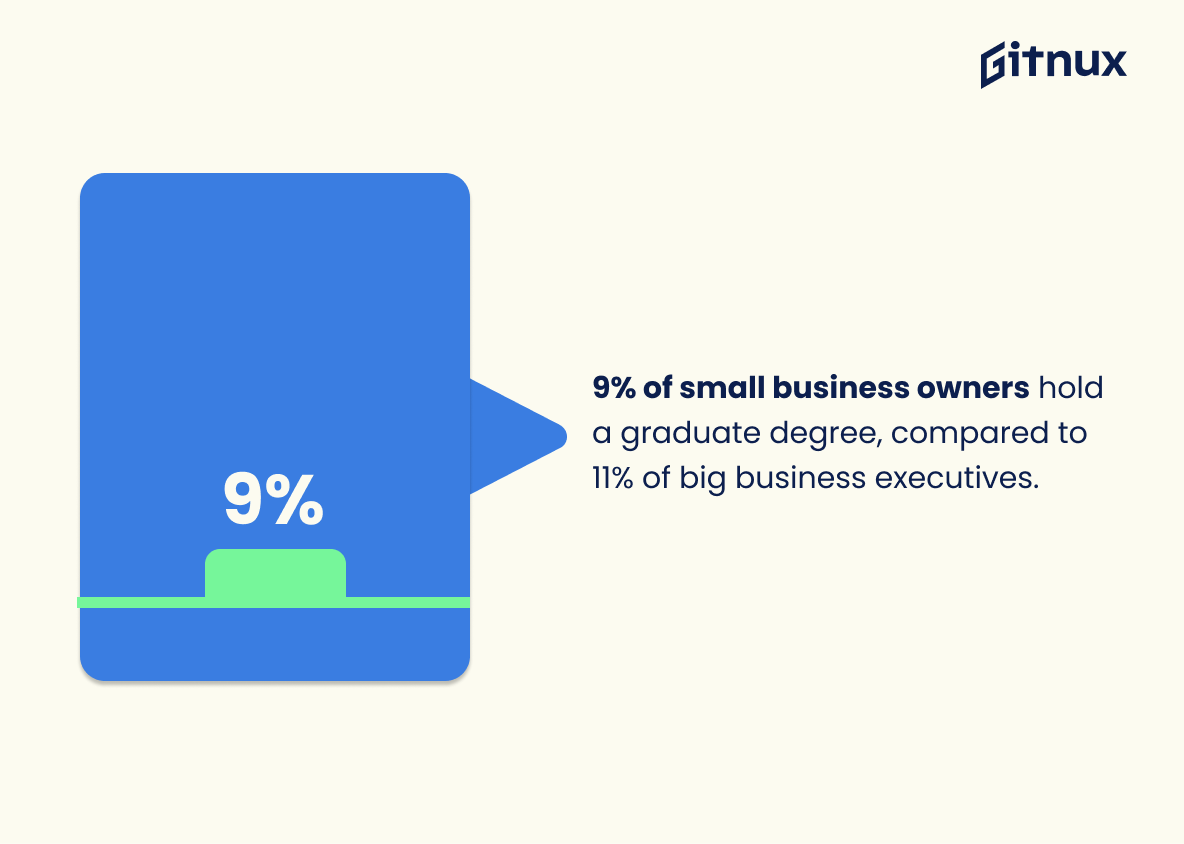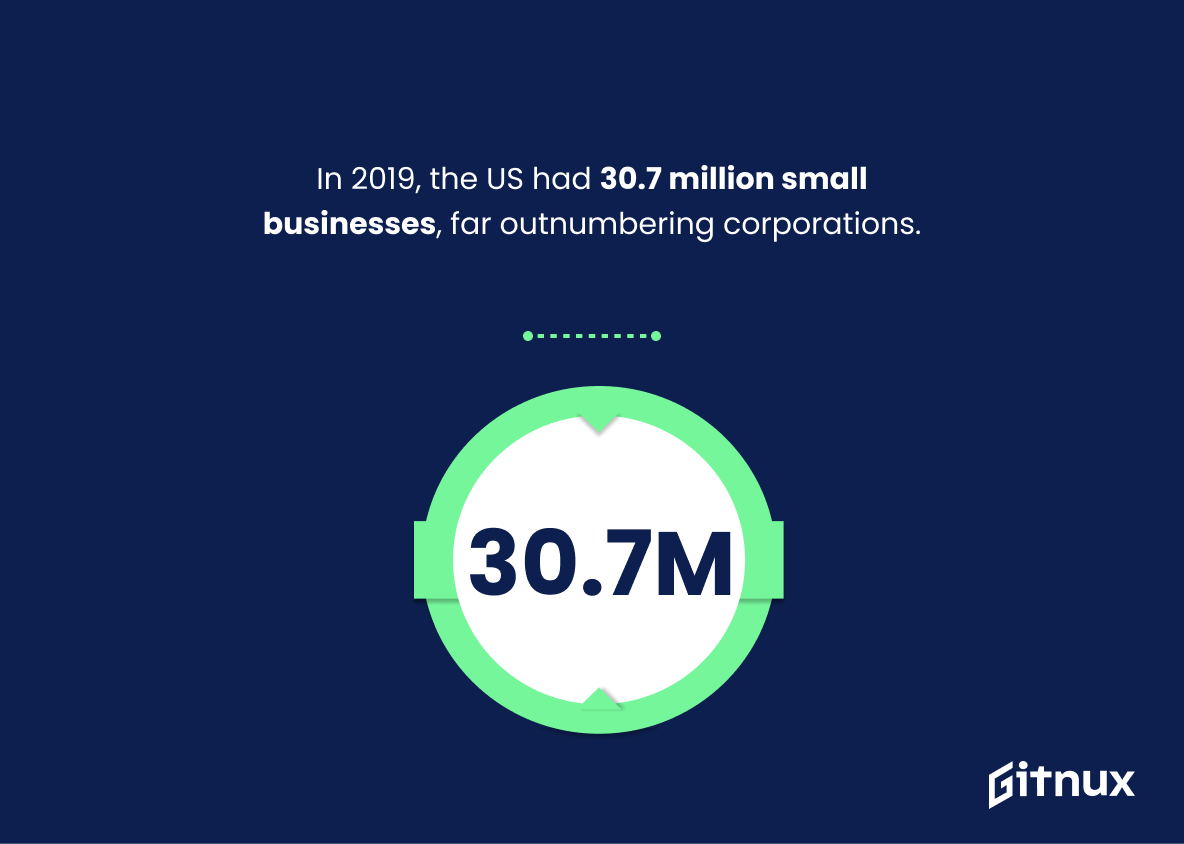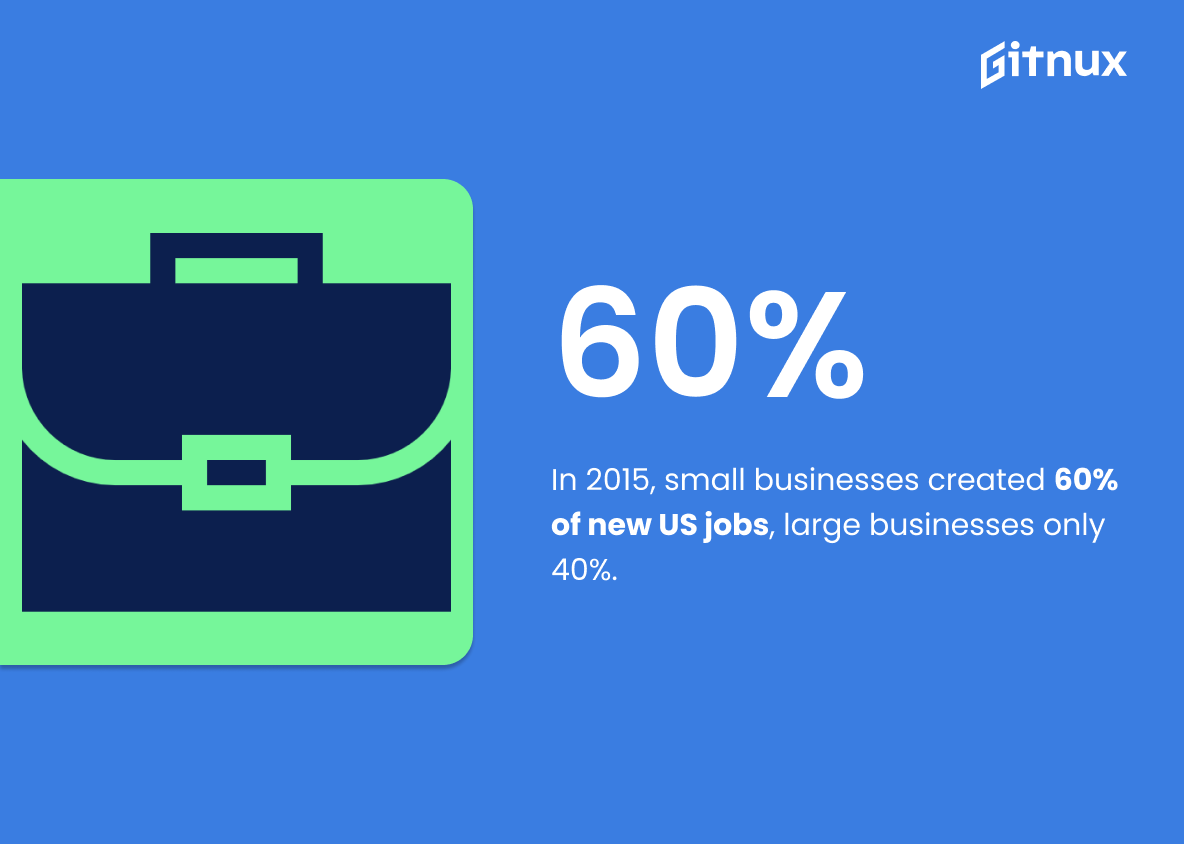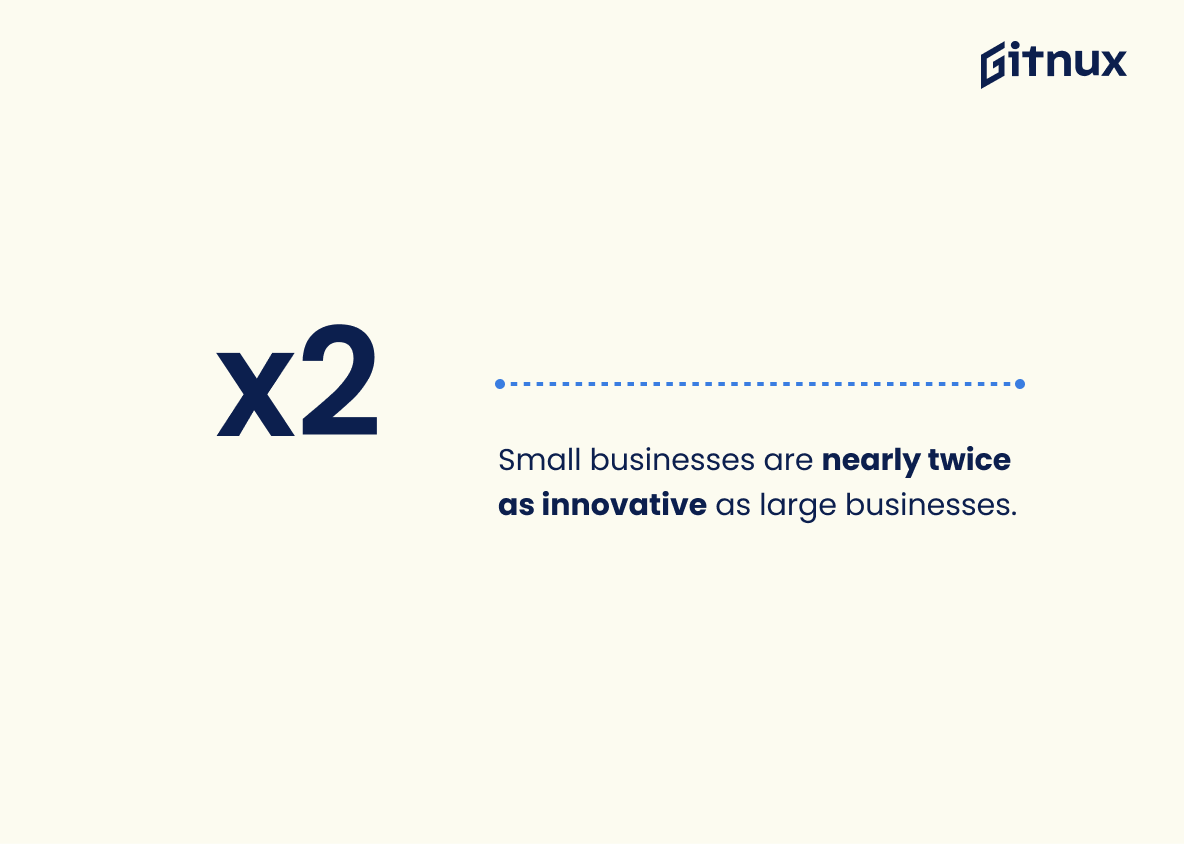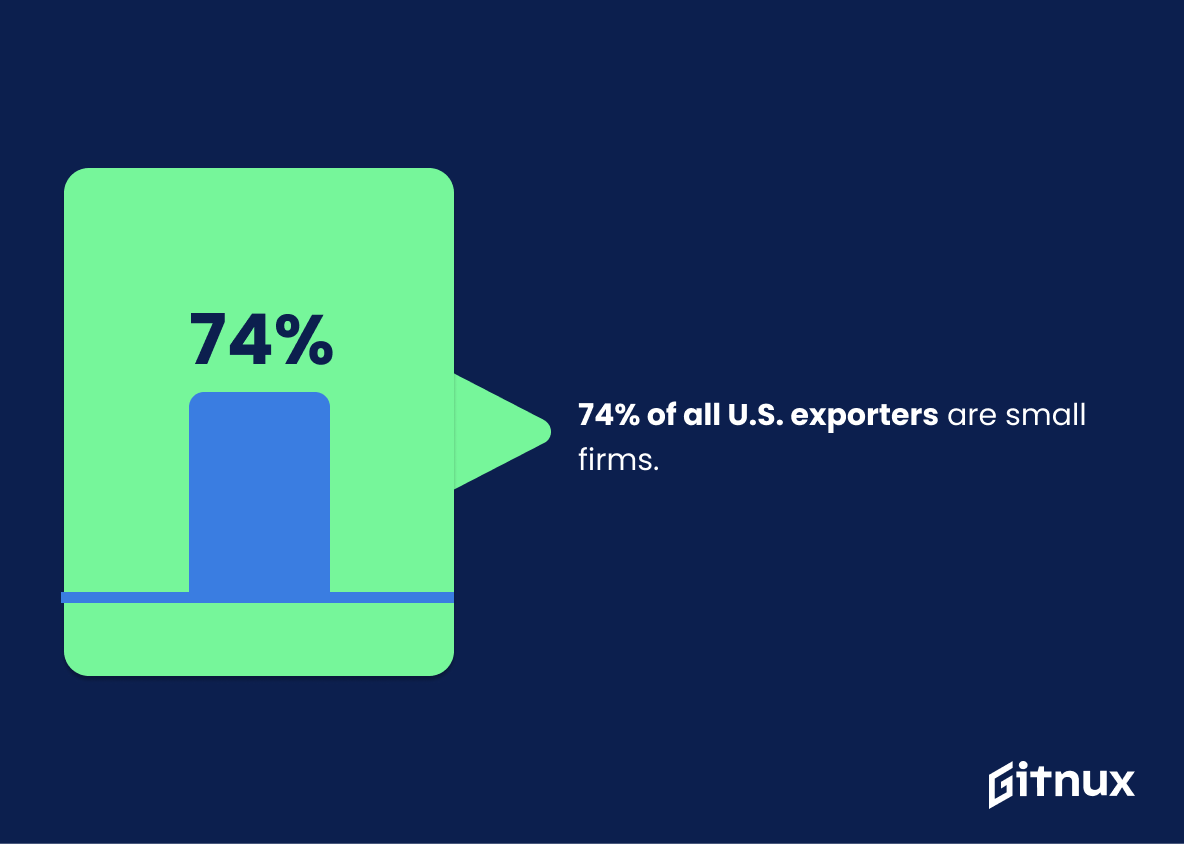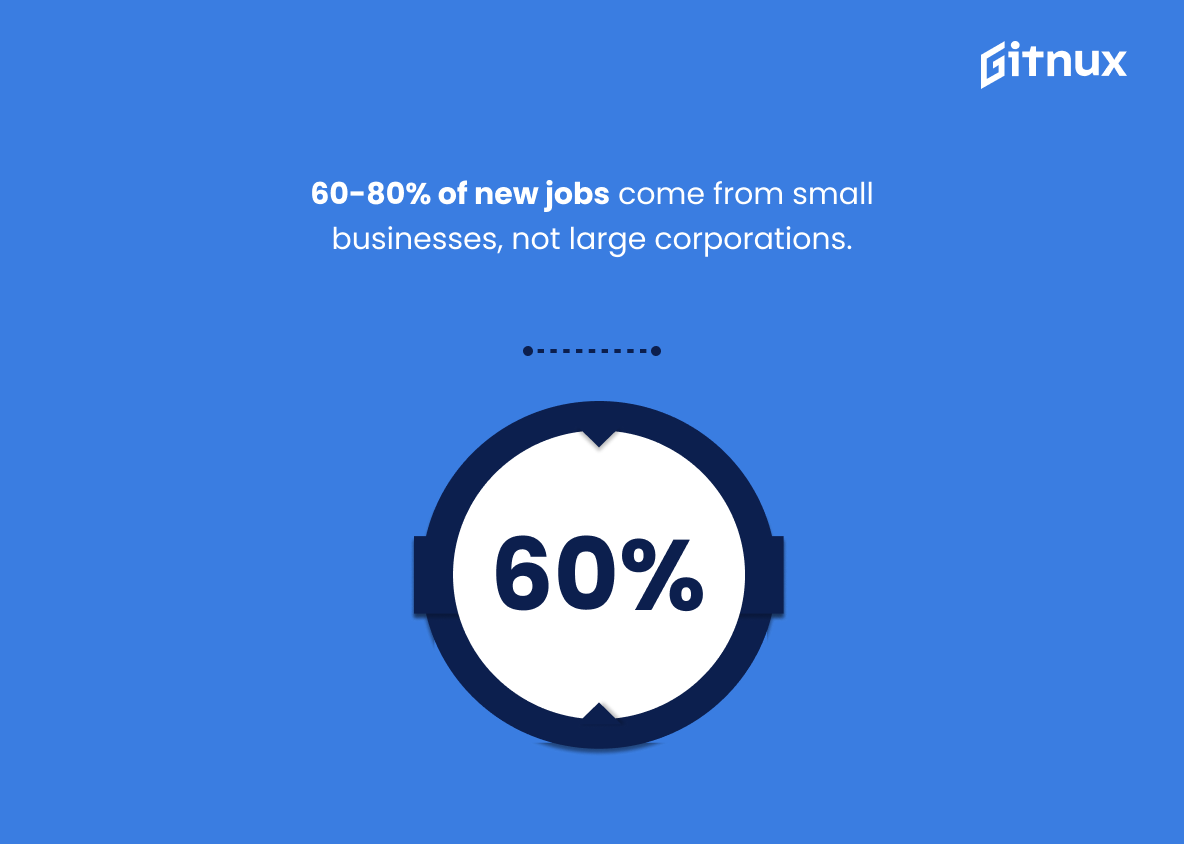In the ever-evolving world of business, the dynamics between small businesses and large corporations are consistently in flux. Beneath the surface of this symbiotic relationship lie fascinating statistics that shed light on the intriguing disparities, unique challenges, and undeniable strengths each embodies. In this captivating blog post, we will delve into the world of small business vs large corporations statistics.
From their substantial impact on economies to market shares, employee welfare, innovation, and beyond. Join us as we analyze the numbers, reveal intricate patterns, and discuss the remarkable insights that these statistics offer. Get ready for an eye-opening journey that exposes the hard-core facts, the raw realities, and the many surprises that lie in store when examining small businesses in contrast to large corporations.
The Latest Small Business Vs Large Corporations Statistics Unveiled
Small businesses created 1.5 million jobs annually and account for 64% of new jobs created in the U.S, Source: U.S Small Business Administration,
In the arena of job creation, small businesses are the lionhearted gladiators battling in full force. Conjuring up 1.5 million jobs annually, they hold a significant power to fuel the US employment engine. With this potent prowess, they are directly handling the reins of 64% of fresh job opportunities in the country.
Serving as a testament to their influence and importance, data from U.S Small Business Administration backs this claim, shedding light on the massive role that small businesses play compared to their colossal counterparts. Therefore, when the conversation comes to small businesses versus large corporations, these numbers are the game changers, defining the profound footprint of small enterprises.
More than half of Americans either own or work for a small business, Source: U.S Small Business Administration,
In the grand tapestry of the American economic structure, small businesses are far from minor threads. According to the U.S Small Business Administration, they actually account for over half of American employment and ownership. This illuminates their vital role in not only driving economic growth but also shaping the workforce landscape. It points out that discussions contrasting small businesses with large corporations are not merely academic; they’re directly applicable to a majority of Americans.
This staggering figure serves as an eye-opening reminder that when we talk about small businesses, we’re talking about the livelihoods of more than half of the American population. It places the small business sector at the very heart of American economic life, making the statistics not just numbers, but a real, impacting narrative for millions.
Small businesses pay 44% of U.S. payroll, Source: Office of Advocacy,
Homing in on this captivating statistic, it sharply underscores that small businesses are a potent force in contributing to the texture of the U.S economy — covering a solid 44% of U.S. payroll. Infusing the discussion with ‘Office of Advocacy’ data offers compelling evidence that diminutivity doesn’t equate to insignificance when it comes to a business’s economic impact.
This injects an intriguing twist to the narrative of Small Business Vs Large Corporations, prompting us to ponder just how pivotal small businesses are in bolstering the financial backbone of the state, and potentially challenging established preconceptions about the role these ‘Davids’ play in an arena often dominated by Goliathan corporations.
9% of small business owners hold a graduate degree, compared to 11% of big business executives, Source: Guidant Financial,
Delving into the dimensions of educational attainment among business leaders offers compelling revelations. The aforementioned statistic, which spotlights a slight edge in graduate degree holders among big business executives (11%) over small business owners (9%), underscores the subtle divergence in academic backgrounds that often characterizes these two business spheres. The diverse educational canvas and the minimal gap paints a picture of opportunity, demonstrating that both small and large businesses can be helmed by individuals with varied academic credentials, including those holding advanced degrees.
Moreover, reflecting on this educational dichotomy can provoke thoughts on how this distinction may impact decision-making, innovation, and long-term company growth in adverse spheres of business. This statistic, thus, lays open an intriguing facet of the small business versus large corporations debate, enriching the dialogue with an intellectual perspective and stimulating further analysis on its potential implications.
There were 30.7 million small businesses in the US in 2019, while the number of corporations was much less than that, Source: The US Small Business Administration,
Painting a vibrant picture of the U.S. economy, this potent statistic—30.7 million small businesses contrasted heavily with the significantly fewer corporations in 2019—serves as a compelling prelude to the fascinating narrative of Small Business Vs Large Corporations. Compelling in its simplicity, it ropes in readers, keen to survey the mosaic of economic ventures that define the country’s commercial landscape.
Dipping into this statistic, our discourse gains necessary context and depth, delineating the scale of David and Goliath-like battle under unfolding on American soil. Moreover, it sparks intriguing questions on diversity, scalability, survival tactics and growth strategies, providing rich fodder for our blog post and igniting enlightening discourse on the dynamics between small enterprises and large corporations.
In 2015, small businesses created over 60% of net new American jobs, while large businesses only created around 40%, Source: Bureau of Labor Statistics,
Shedding light on the job creation powerhouse that is small businesses, this gripping statistic from the Bureau of Labor Statistics adds an unexpected twist to the narrative within a blog post contrasting Small Businesses and Large Corporations. In 2015, the nimble yet mighty small businesses impressively crafted over 60% of net new American jobs, outshining their colossal counterparts which trailed behind at around 40%.
This revelation not only elevates the vital economic role of small businesses, but also tips the scales in their favor, revealing an often overlooked strength when placed head-to-head with large corporations in the ongoing debate of their respective impacts.
Only about 50% of small businesses survive five years or more, compared to larger corporations which have a much higher survival rate, Source: Bureau of Labor Statistics,
Drawing on the revealing insights from the Bureau of Labor Statistics, it’s evident that the world of small business is not for the faint-hearted, with only half managing to navigate the tumultuous waters past the five-year mark. Contrastingly, the high-rise corporate world inhabited by larger corporations presents a steadier picture, with survival rates that eclipse those of their smaller counterparts.
Intricate tales of survival, growth, and adversity are spun from the threads of these statistics, creating a narrative that is integral to the overall theme of the blog post. It illuminates the inherent risks, challenges and perseverance involved in maintaining a small business, reflecting the grit necessary to achieve longevity in a competitive marketplace.
Meanwhile, the higher survival rate of the gargantuan corporations underscores their relative stability and resources, a titan’s advantage in the raw, unfettered jungle of business. The stark contrast not only enriches the discussion on Small Business Vs Large Corporations, but also compels readers to question and understand the underlying factors behind these survival rates.
Small businesses are nearly twice as innovative as large businesses (measured by patents per employee), Source: SBA Office of Advocacy,
Delving into the intriguing dynamics between small businesses and large corporations, one cannot ignore the enlightening piece of data from the SBA Office of Advocacy. Holding a magnifying glass to innovation rate, small enterprises have an almost double potentiality in this domain, as gauged by patents per employee. By putting innovation at the forefront of the evaluation, we are amplifying a facet of businesses that can often feel obscure, but is indeed of paramount importance.
Firstly, this metric gives wings to the voice of small enterprises, creatively telling the world they are engines of invention despite having limited resources at their disposal. Through the lens of this statistic, these initially perceived underdogs seize the spotlight, breaking the stereotype that larger corporations are automatic innovation leaders.
Secondly, the statistic paints a vivid picture of the competitive landscape in which small businesses don’t just survive, but thrive. In a narrative generally dominated by large corporations, this data brings in an unsuspecting twist – that smaller businesses don’t come in second in terms of innovation; they lead the pack.
Lastly, it injects a potent dose of reality into the perceived dichotomy of small versus large businesses. Size doesn’t always equate to prowess. The innovation statistics suggest that it is not about the size of the team, but the pool of ideas and entrepreneurial spirit. The “giant-killer” story that this statistic tells amplifies the power and potential of small-scale businesses. This revelation may contribute to a paradigm shift for both policymakers and potential investors, potentially tilting the scales towards favouring small businesses.
And so, the statistic acts as a testament to the power of the ‘small but mighty’, a resounding affirmation that small businesses are not only competitive, but also in many ways, trendsetters, innovators, and pioneers.
74% of all U.S. exporters are small firms, Source: U.S. International Trade,
Peeking behind the curtains of U.S. exports, we uncover a surprising titan, shaping the economy more than one might assume. Small businesses, in fact, lay claim to a staggering 74% of all U.S. exporting firms as per U.S. International Trade data. Now, you might be wondering, why does this fact carry so much weight within a conversation comparing small businesses with large corporations?
Well, it’s simple. This fact alludes to the muscular role that small businesses play within the U.S. economy. It’s a testament to their formidable presence in international trade, a sphere often assumed to be dominated by large corporations. In the sea of mind-bending numbers and statistics, this 74% serves as a beacon marking the importance and dynamism of small firms.
It provides an encouraging narrative — the David vs. Goliath story of the business world. Despite the size, resources, and market presence of large corporations, small businesses have carved out an impressive niche for themselves. Each of these small firms serves as a window into a thriving entrepreneurial spirit, powering the economic engine at its most fundamental level.
In short, by presenting the surprising statistic that 74% of all U.S. exporters are small businesses, we create a new paradigm that changes preconceived notions about the picture of American business. It’s an invitation to look beyond the corporate giants and recognize the underdog’s narrative in the world of business and international trade.
60-80% of all new jobs come from small businesses. Large corporations actually account for a smaller percentage of job creation, Source: Small Business Trends,
Undeniably, the statistic revealing that the juggernaut of job creation, accounting for some 60-80% of all new roles, is indeed small businesses versus large corporations is a compelling revelation. This disclosure establishes small businesses as the linchpin of employment growth, proving their vitality within our economy’s robustness.
Interpreting these figures provides an unexpected twist in the narrative of our blog post about Small Business Vs Large Corporations Statistics. Rather than towering corporations, it’s the underestimated underdogs — the small businesses — that step into the limelight as the engines of job creation. This knowledge reshapes our understanding, revealing the true heroes of economic sustainability and growth as the smaller, local entities, firmly rooting our focus and respect towards them.
Small businesses donated 250% more than larger businesses to non-profit organizations, Source: Score,
Highlighting a figure such as “Small businesses donated 250% more than larger businesses to non-profit organizations,” uncovers a compelling portrait of small businesses stepping up their philanthropic game unlike their larger counterparts. In a post contrasting Small Business Vs Large Corporations, this statistic works as a striking differentiator, shedding light on the profound social impact small businesses bring to the table.
Not only does this drive home the point of communities thriving on the generosity of small businesses, but it also pivots the narrative towards the inherent social responsibility small ventures tend to exercise. This dynamic, often overshadowed in the debate of economic influence, gives small businesses a definitive edge and presents a perspective that might influence perceptions, stakeholder decision-making, and policy directions.
The small businesses sector in America occupies 30-50% of all commercial space, an estimated 20-34 billion square feet, Source: Small Business Administration,
Highlighting this compelling statistic paints a vivid picture of the sizeable imprint small businesses make on the physical landscape of America’s commercial space. It is a testament to their formidable presence and influence within the business sphere, challenging the common perception that large corporations dominate the scene uncontested. By occupying a significant 30-50% of all commercial space, small businesses emerge as more than just contenders – they’re integral parts of the economy.
This figure, standing at an impressive 20-34 billion square feet, further solidifies their relevance, giving credence to the essential role they play in shaping economic trends and business discourse. So, in the grand chessboard of Small Business Vs Large Corporations, this fact brilliantly illuminates the spaces and niches filled by small businesses, underscoring their extensive reach and dynamic participation in America’s commercial scene.
In 2020, approximately 43% of cyber-attacks targeted small businesses, while large corporations were less targeted, Source: Verizon,
Highlighting this fascinating figure from Verizon underscores the vulnerability of small businesses in the digital landscape. The alarming 43% of cyberattacks focusing on small firms in 2020 establishes an undeniable contrast to their larger counterparts.
This dynamic shows that small businesses, which often lack robust cybersecurity measures, are not only competing against large corporations in revenue and market share, but also in maintaining virtual security. This compelling contrast paints a vivid image, demonstrating that even in online warfare, it’s not just commercial power that matters, but also cyber resilience.
Conclusion
Small businesses and large corporations indeed play unique and critical roles in our economy. Both have their strengths and challenges – with small businesses offering personalized service, innovation and local economic stimulation, while large corporations provide stability, job creation and significant contributions to national GDP.
However, statistics continuously illuminate the impact of small businesses, proving that they are not only vital contributors to the economy but also indispensable for the entrepreneurial spirit they ignite. While large corporations may have scale and resources, the dynamism, resilience and creativity found in small businesses arguably make them equally significant. Thus, fostering an economic environment that supports both entities isn’t just advantageous, it’s necessary.
References
0. – https://www.www.score.org
1. – https://www.www.sba.gov
2. – https://www.www.bls.gov
3. – https://www.smallbiztrends.com
4. – https://www.www.guidantfinancial.com
5. – https://www.www.sba.gov.
6. – https://www.www.export-u.com
7. – https://www.enterprise.verizon.com
8. – https://www.advocacy.sba.gov
